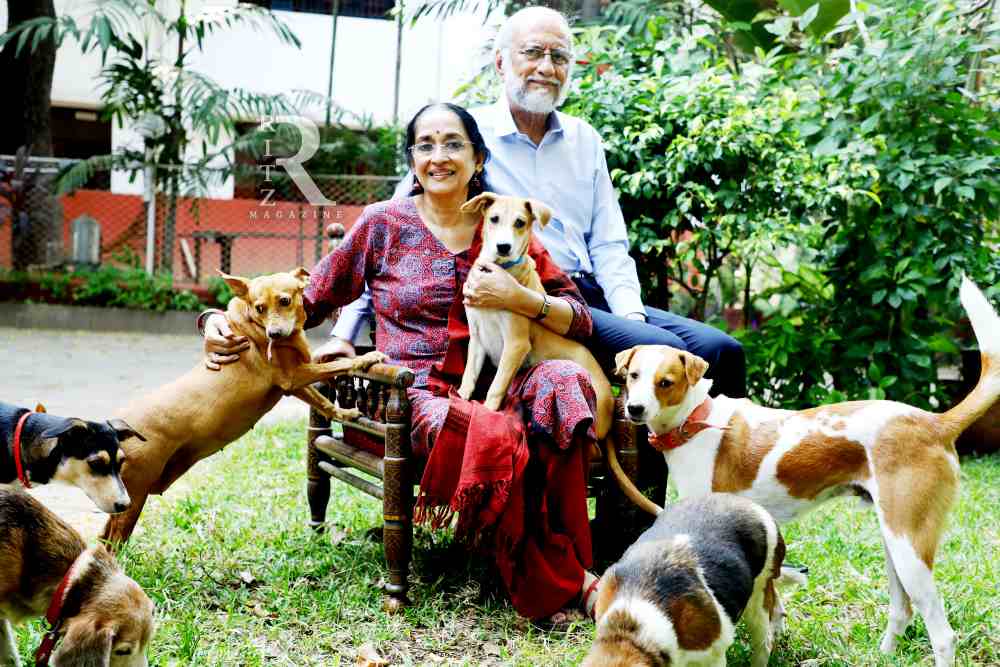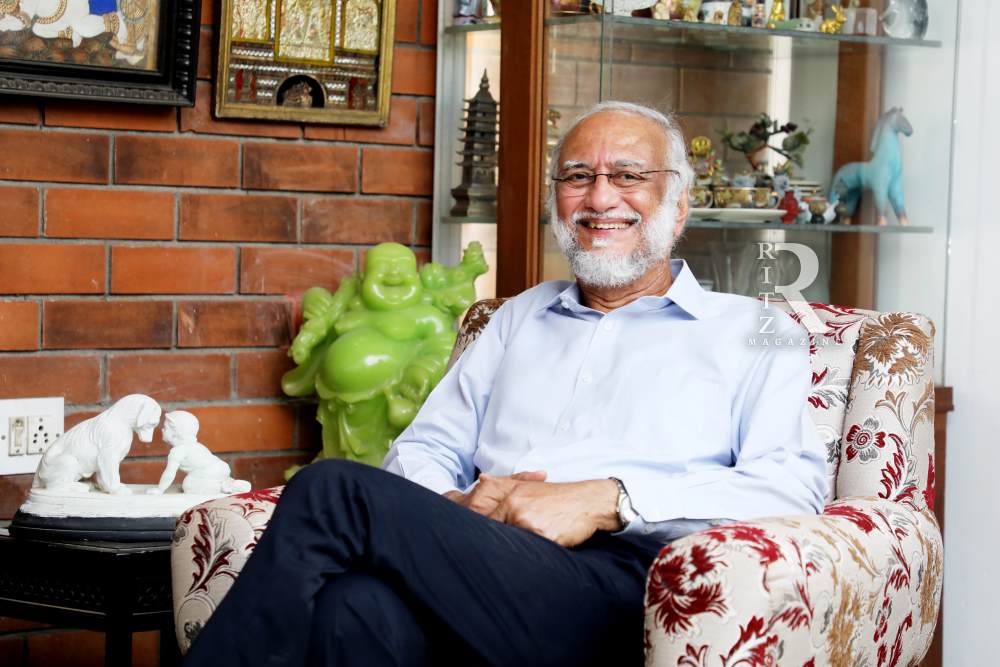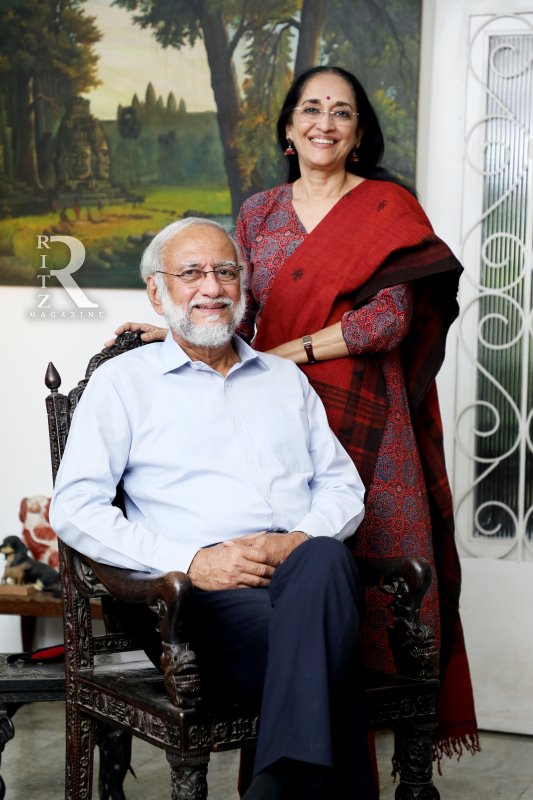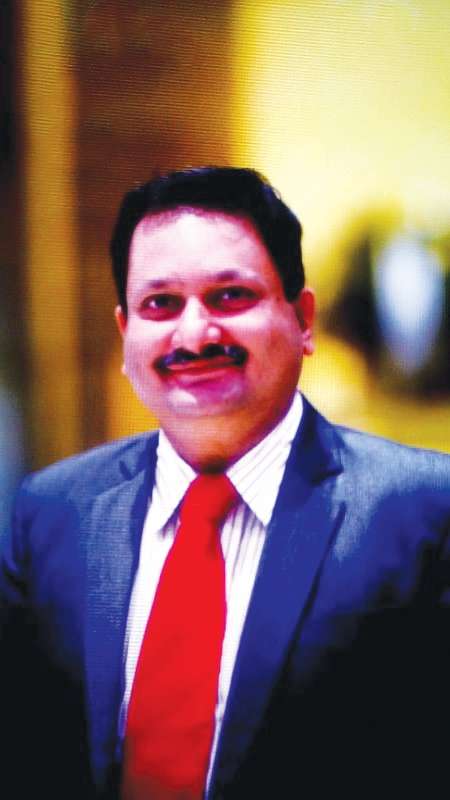The Krishnas have never needed a calling bell at their door. Or a watchman. Not when they have had Jumble, Bhairav, Lakshmi, Ruff, Bhalu, Bubloo, Moosa, Moksha, Mukthi, Honey and a hundred others, to do the honours, ushering in visitors with their affectionate sighs and waggy tails – here a bow, there a wow! “Our home has never been without rescued animals and we have had as many as 20 at times,” reveals Chinny Krishna. And just as well, as even his parents’ home in Bazullah Road doubled up as a shelter for “all kinds of rescued and injured animals – cats, dogs, cattle, donkeys, birds and a mongoose rescued from a snake ‘charmer’.” The ‘Chinny Wise & Pound Compassionate’ way of life can be traced to his maternal grandfather Professor T.S. Krishnamoorti who inculcated “a great reverence” for all creatures, great and small.
 The proof of the welfare is in the genes. And the awards. So when this dogged activist was honoured with the Lifetime Achievement Prani Mitra (Friend of Animals) Award by the Union Minister for Animal Welfare Giriraj Singh recently, it was not coincidental but providential that his illustrious father Captain V.Sundaram who founded Blue Cross was bestowed with the same epaulette posthumously twenty three years ago. A reflection of carrying on a legacy. Quite a ‘man of letters’, Chinny is quick to quote Isaac Newton: “If we are able to see further, it is because we are able to stand on the shoulders of giants”. The equanimity that the Vice Chairman of the Animal Welfare Board of India (AWBI) imbibed, armed him with the conviction to lock horns with the establishment in the Supreme Court over the Jallikattu ban, at the reported cost of a Padma Award.
The proof of the welfare is in the genes. And the awards. So when this dogged activist was honoured with the Lifetime Achievement Prani Mitra (Friend of Animals) Award by the Union Minister for Animal Welfare Giriraj Singh recently, it was not coincidental but providential that his illustrious father Captain V.Sundaram who founded Blue Cross was bestowed with the same epaulette posthumously twenty three years ago. A reflection of carrying on a legacy. Quite a ‘man of letters’, Chinny is quick to quote Isaac Newton: “If we are able to see further, it is because we are able to stand on the shoulders of giants”. The equanimity that the Vice Chairman of the Animal Welfare Board of India (AWBI) imbibed, armed him with the conviction to lock horns with the establishment in the Supreme Court over the Jallikattu ban, at the reported cost of a Padma Award.
It was that foundation of compassion that egged Chinny on to pioneer some path breaking initiatives. Like the Animal Birth Control (ABC) programme. And there hangs a tale, with a trigger warning.

Photography: Gurunath Prabhu
“When I was growing up in the fifties and early sixties, the most ubiquitous sign we could see was that of an inverted Red Triangle and the words ‘a small family is a happy family’. So, from there to thinking of birth control for dogs was not a quantum leap. From 1959 onwards, I was aware of the terribly barbaric ways in which the Madras Corporation handled the issue of dogs on the street. The cruelty started with the thin wire nooses with which the dogs were caught; with the wire cutting into the flesh, to the way they were swung and flung onto the vehicle. The cruelty extended to the hours they were in the hot sun with their mouths muzzled and their legs bound and the transportation to the dog pound at Pulianthope. Here, they would spend three days without food or water and then be electrocuted.” Claude Bernard equated this type of electrocution with ‘curarisation’ which he described as “behind this lifeless body, there is a feeling being in its entirety. It feels every touch and contact but it is totally paralysed and lacks the means to show it.”
Did you know that till the end of the eighteenth century, if a citizen complained to the authorities of a biting dog in the bazaar, the Collector or District Magistrate would have the animal shot? The City Municipal Act of 1919 gave the local body the power to “protect” its citizens from dangers posed by animals and the electrocution began with the avowed purpose of “controlling the number of stray animals and the spread of rabies”. Delving into the records of the Municipality from 1919, Chinny was surprised to find that every year since 1919 till 1964, “more and more dogs were being killed each year and the number of cases of human rabies also followed a similar upward trend. From three or four reported cases in 1919, the number of rabies deaths had reached 120 in 1996” in Madras City.
“My meetings with successive Corporation Commissioners and Mayors met with no action except by Mr Poornalingam who promised to do something but was soon transferred. It was in 1996, that Commissioner Abul Hasan came with me to the dog pound and witnessed first-hand the barbarity involved. When I explained to him that it was not fair on our part to dehumanise the employees by making them do such acts, he promised me that he would ‘seriously look into this’. Shortly thereafter, the Municipal Council was dissolved due to the muster roll issue and Mr.Hasan was made the Special Officer – equal to the Mayor. The countdown started. I was given six months to prove that my concept of ABC would work.The area from the Kotturpuram Bridge upto the Malar Hospital Bridge and south of Saidapet Bridge was assigned to us. The Blue Cross worked round the clock and when Mr Abul Hasan came with me after six months, except two or three dogs on the road, all the others had a notch on their right ear, meaning they had been spayed and vaccinated. Overnight, Abul Hasan stopped the electrocution at Pulianthope and converted the torture chamber into a surgical theatre.”
A miracle ensued. Within just one year, the number of rabies cases which had been spiralling for 100 years showed a decline. The programme which world-wide had been called TNR (Trap, Neuter and Return) was re-named by the Blue Cross of India as the Animal Birth Control (ABC) programme to convince the municipal body that control of the street dog population and rabies was as simple as ABC. “Today, the WHO, OIE and the FAO all refer to the TNR programme as the ABC programme – the biggest compliment that they could pay us!” Over the years, Chinny has criss-crossed the globe on requests to set up scientifically accepted ABC programmes and has addressed international conferences on the subject at Bratislava, Riga, Singapore, Hongkong, Milan, London, Orlando, Amman, Brussels, Vienna and Prague, collaring along the way, awards from the Winsome Constance Kindness Trust and the Middle East Network for Animal Welfare.
During his formative years, before Chinny studied Chemical Engineering and became the Executive Chairman of Aspick Engineering Private Limited, the streak of activism came to the fore. As a student of St.Joseph’s at Bangalore, dissection in biology classes was compulsory. Chinny refused to do it and was sent to the Principal Fr Biscaroff who told him that it was necessary to “develop fine motor control” and “how else could one learn about life?” This retort “that it is true that biology meant the study of life but I can’t learn about life by killing” lead to a fait accompli. Digging in his heels, “the Principal told me that if I want to do my Senior Cambridge exams from the school, I must dissect as six marks were given for cutting and pinning the animal. I went and met the Principal of Clarence High School and told him why I was changing schools in my final year. I still remember Mr Flack’s reply: “If your principles do not allow you to kill an animal and you are willing to lose marks, I have no problem”. It was as good as the academician telling him: ‘Take a bow, show them how’!
Post a B Tech degree, this idealistic youngster did an apprenticeship with Mount Mettur Pharmaceuticals where rats and mice were routinely used. After his M Tech and MS from Bucknell University, Chinny joined American Cyanamid in New York. “In 1983, I bought a computer for my office and it came pre-loaded with an interactive chess game. I discussed this with a colleague of mine from IIT M Dr Basu John, who was the proprietor of Klein & Peyerl, a landmark for a century on Mount Road. In 1985, the Blue Cross of India released its first interactive simulation of dissection “Compufrog”. In the next few years, we developed five more such programmes – for the rat, cockroach, pigeon, earthworm and rabbit. These were hailed as an alternative to dissection.”
The Swiss League Against Vivisection in Geneva purchased 3,000 copies of Compurat and Compufrog programmes and distributed these to schools in Switzerland. “We made it clear that these had no copyright and anyone was free to copy and use them. Thanks to a British group called InterNiche, thousands of these programmes were used in the EU and USA.”
The ‘Power of One’ was evident when the Blue Cross of India filed a case in the Delhi High Court in the early nineties that ruled that no child could be forced to dissect against his or her belief. In 1996, the Government of India banned the dissection of animals in all schools in India.
The milestones in Chinny’s animal welfare journey seem countless. Like the ban obtained on the export of monkeys from India, or on frogs’ legs where live frogs had their legs chopped off and left to die on the beaches in Kerala; the Dog Control Rules of 2001 which stopped the killing of community pets and made ABC the only legal way to control their population. All these strides were made during his three terms as the Vice Chairman of the Animal Welfare Board of India.
At some level, the activism has rubbed off on Chennai’s population making the city home to a sizeable chunk of animal warriors. This serves to highlight and condemn instances of cruelty like the two medical college students who threw a puppy off a third floor roof “for fun” or of people feeding explosive laden fruits to elephants.
The family support for the cause has been tremendous, with Chinny’s graceful wife Dr Nanditha Krishna, a historian, environmentalist & author complementing his efforts. “From agreeing to a silk and leather-free wedding 47 years ago to the hundreds of articles she has written on various animal welfare issues, the list is endless. As a matter of fact, it was her article, ‘Slaughter for Science’ in 1976 in The Illustrated Weekly of India, that directly led to the ban on the export of monkeys from India.”
At the forefront of awareness drives about the need to adopt and not shop for ‘breeds’, Chinny has been instrumental in popularising native pets through the ‘Great Indian Dog Show’ and ‘Adoptathons.’ Many gated communities and flat owners have been made to change their old mindsets about allowing pets. “It is an ongoing issue but with the Registrar of Societies putting up on their website a specific note that Flat Associations cannot ask people not to have pets, we now have the law on our side.
Drawing a co-relation between cruelty to animals and violent crime, Chinny cites a study commissioned by J Edgar Hoover, former Director of the FBI, titled ‘First Strike’ which showed that many of those convicted of pre-meditated violent crimes against people had a prior record of violence towards animals. The first strike is always against the hapless wife, child, animal. In Chennai, a few years ago, a medical college student convicted of killing a classmate was reported to have had a prior history of killing cats with his scalpel.”
During the Covid pandemic, Chinny spearheaded volunteers across Chennai and “fed over a 100,000 meals to stranded animals.” Hotel Green Park in Vadapalani “responded to our urgent request by opening their fabulous kitchen under their Chief Chef Mr Thangappan to make up to 500 meals per day for street dogs. Our modern steam kitchen donated by the HCL Foundation has a capacity of only 400 meals per day, so between us we were able to reach about 900 to 1000 meals per day.” The Animal Husbandry Department, Aavin, the Rajasthan Association and Jain International Trade Organisation helped by giving rice and other items. “Especially touching was the donation, of one tonne of rice, six hundred kilos of dhal and other materials by a school student Arnav Rathore.”
The Blue Cross head honcho has worked to give the Prevention of Cruelty to Animals Act (PCA) more teeth. “In 2010 we sent a draft new Bill revising the statute to the Government. Finally, last week, the authorities have finally announced that this bill is being introduced. The new version increases the measly Rs.50 maximum fine to Rs.75,000 and the jail tern up to five years.” To the perpetrators out there, here’s a message: ‘Sue’ you soon!
(Sanjay Pinto is an Advocate practising at the Madras High Court, Columnist, Author, Public Speaking Mentor & Former Resident Editor – NDTV 24×7)







 Raashii Khanna
Raashii Khanna










